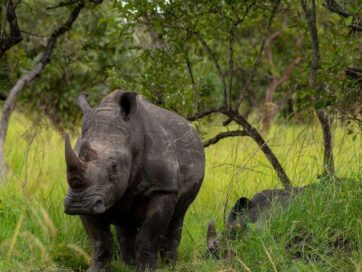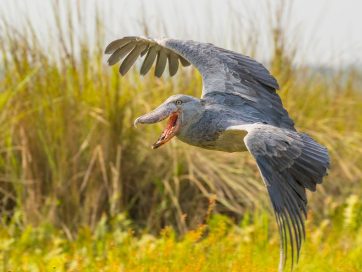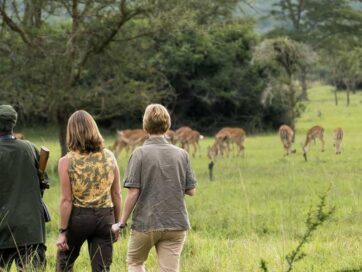The Shoebill Stork Bird in Uganda: Where to See It and Fascinating Facts
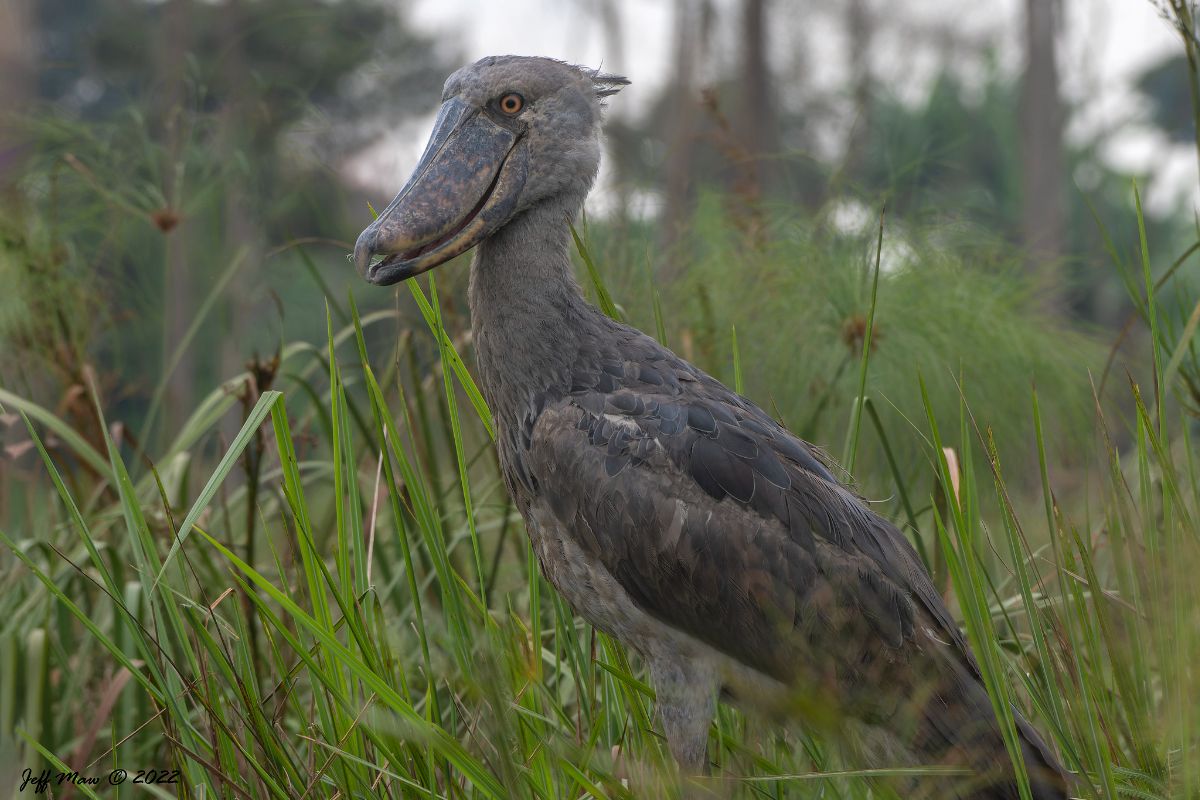
Uganda is one of the best places in the world to see the rare and fascinating shoebill stork bird. This incredible bird, known for its massive shoe-shaped bill and prehistoric appearance, is a must-see for birdwatchers and nature lovers visiting Uganda. In this blog, we will explore everything you need to know about the shoebill stork, including where to see it, its unique characteristics, and our recommended itineraries for spotting this magnificent bird in Uganda.
What is the Shoebill Stork Bird?
The shoebill stork bird, sometimes called the whale-head or shoe-billed stork, is a large wading bird scientifically known as Balaeniceps rex. It is named after its enormous, shoe-shaped bill, which is used to catch fish and other prey. While it looks similar to storks, genetic studies have shown that the shoebill stork bird is more closely related to pelicans and herons.
The shoebill stork is mostly grey, with brownish tones in younger birds. It is native to tropical East Africa and thrives in large swampy areas from South Sudan to Zambia, with Uganda being one of the best places to see this extraordinary bird.
Where to See a Shoebill Stork Bird in Uganda
Uganda is home to several key locations where visitors can spot the shoebill stork bird in its natural habitat. These include:
1. Mabamba Swamp
Mabamba Swamp, located on the shores of Lake Victoria, is Uganda's most renowned spot for observing the shoebill stork. Visitors can enjoy close-up sightings during canoe excursions through the swamp's channels.
Getting to Mabamba Swamp
The quickest and most rewarding way to reach Mabamba Swamp is by boat from Entebbe. Departing from Nakiwogo or Port Alice, the journey across Lake Victoria takes approximately 40 to 50 minutes. Along the way, travelers can spot various bird species. Upon arrival at Mabamba, visitors transfer to smaller, locally operated canoes guided by experienced birding experts to navigate the swamp and increase the chances of shoebill sightings
2. Murchison Falls National Park
This park is located in northwestern Uganda, approximately 300 kilometers (186 miles) north of Kampala. The a journey that typically takes 5 to 6 hours by road via Masindi and is a home to Lake Albert Delta which is another excellent spot to see the shoebill stork bird in Uganda, especially during boat safaris along the Nile. In addition to bird watching, visitors can enjoy game drives to see elephants, giraffes, and lions, as well as boat cruises to the base of Murchison Falls.
3. Lake Mburo National Park
Another place to see a shoebill stork bird in Uganda is Lake Mburo National Park, located in western Uganda approximately 240 kilometers (149 miles) from Kampala, It is accessible via the Masaka-Mbarara highwaya. The drive takes approximately 3 to 4 hours via the Masaka-Mbarara highway. While sightings are less frequent here, fortunate visitors may spot the shoebill stork bird in the park's wetland areas. In addition to birdwatching, the park offers a variety of activities, including game drives, boat trips on Lake Mburo, horseback safaris, and nature walks.
4. Ziwa Rhino Sanctuary
Which is situated approximately 176 kilometers (109 miles) north of Kampala, along the Kampala–Gulu highway. The drive typically takes about 2.5 to 3 hours. While renowned for its rhino conservation efforts, the sanctuary's wetlands also provide a prime habitat for the shoebill stork, making it a notable location in Uganda to observe this unique bird species
5. Semuliki National Park
Semuliki National Park, located in western Uganda approximately 360 kilometers (224 miles) from Kampala, is accessible via Fort Portal, with a road journey of about 6 to 7 hours. This park is a fantastic birding destination where the shoebill stork has been observed. Visitors can also enjoy hot springs visits, forest walks, and diverse birding opportunities
6. Uganda Wildlife Education Center (Entebbe Zoo)
The Uganda Wildlife Education Centre (UWEC), commonly known as Entebbe Zoo, is conveniently located in Entebbe near the shores of Lake Victoria, making it easily accessible from Kampala by road. For those with limited time, UWEC houses a shoebill stork bird, allowing visitors to observe this remarkable bird up close.
Is the Shoebill Stork Bird Friendly to Humans?
The shoebill stork bird is generally not aggressive toward humans and is known for its calm and patient nature. It often stands still for long periods while hunting, which makes it easier for visitors to observe and photograph. However, like all wild birds, it should be respected from a distance to avoid disturbing its natural behavior.
Can a Shoebill Stork Bird Fly?
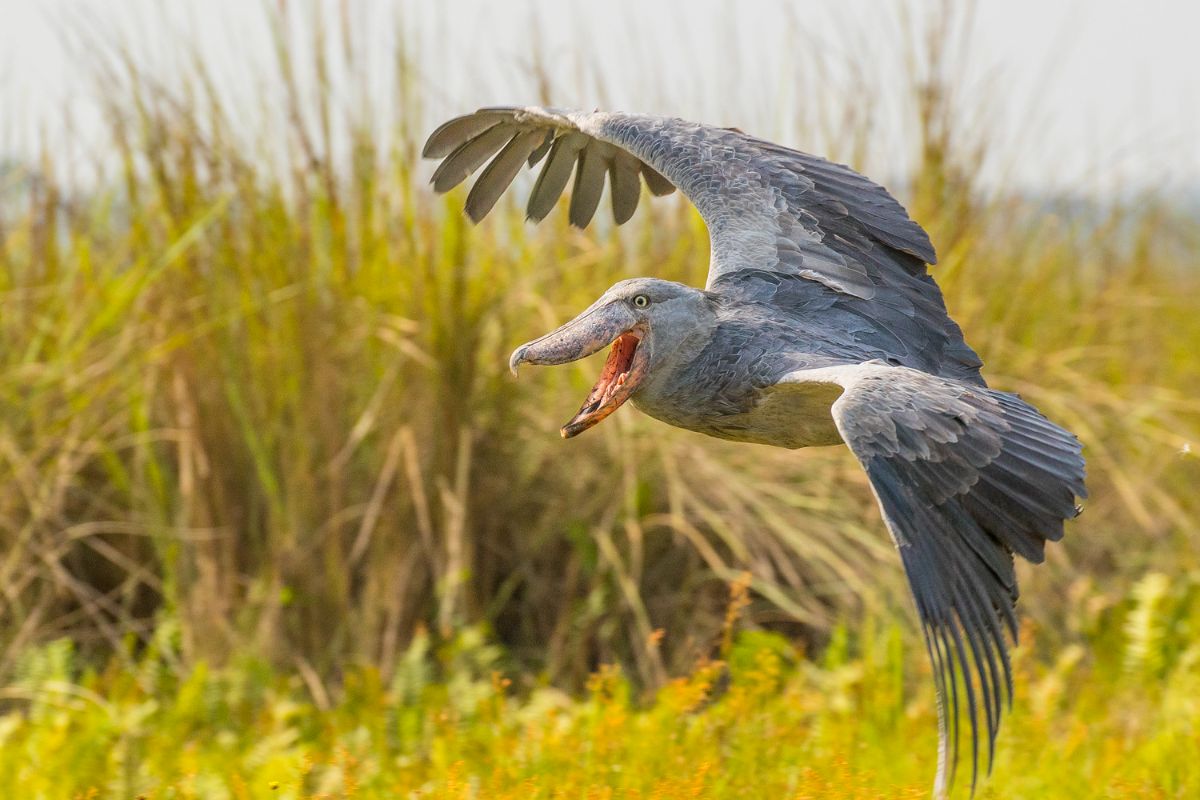
Yes! Despite its large size, the shoebill stork bird is capable of flying. It has broad wings that allow it to soar gracefully over wetlands. When in flight, it flaps its wings slowly, making it look almost prehistoric as it glides through the air.
How Tall Can a Shoebill Stork Bird Get?
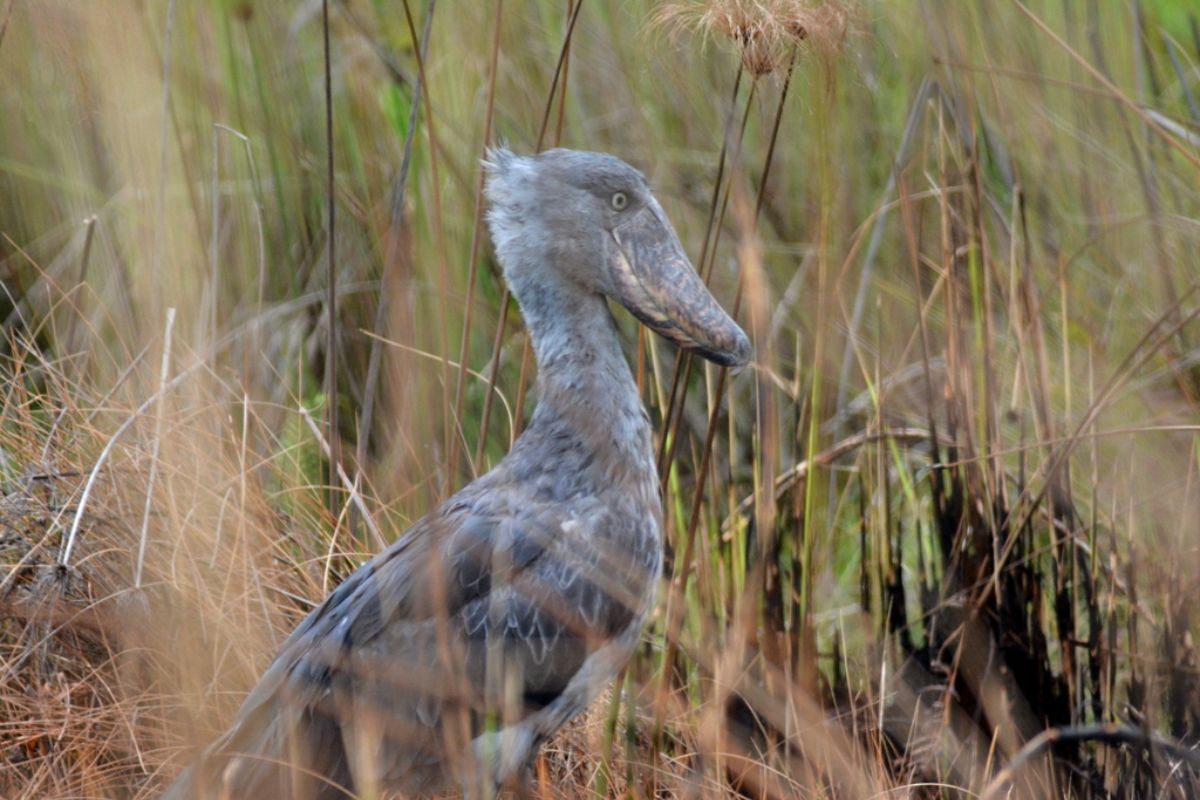
The shoebill stork bird is a tall bird, typically standing between 110 to 140 cm (43 to 55 inches). Some individuals can grow as tall as 152 cm (60 inches). Its wingspan is also impressive, ranging from 230 to 260 cm, which helps it navigate its swampy habitat.
How Big Can a Shoebill Stork Bird Get?
The shoebill stork bird is quite large, with weight ranging from 4 to 7 kg (8.8 to 15.4 lb). Males are usually larger, weighing around 5.6 kg (12 lb), while females weigh around 4.9 kg (11 lb).
How Fast Can a Shoebill Stork Bird Fly?
The shoebill stork bird flies at a moderate speed, usually around 30-48 kilometers per hour. Its flight pattern is slow and steady, making it an elegant sight when soaring over Uganda’s wetlands.
What Does a Shoebill Stork Bird Eat?
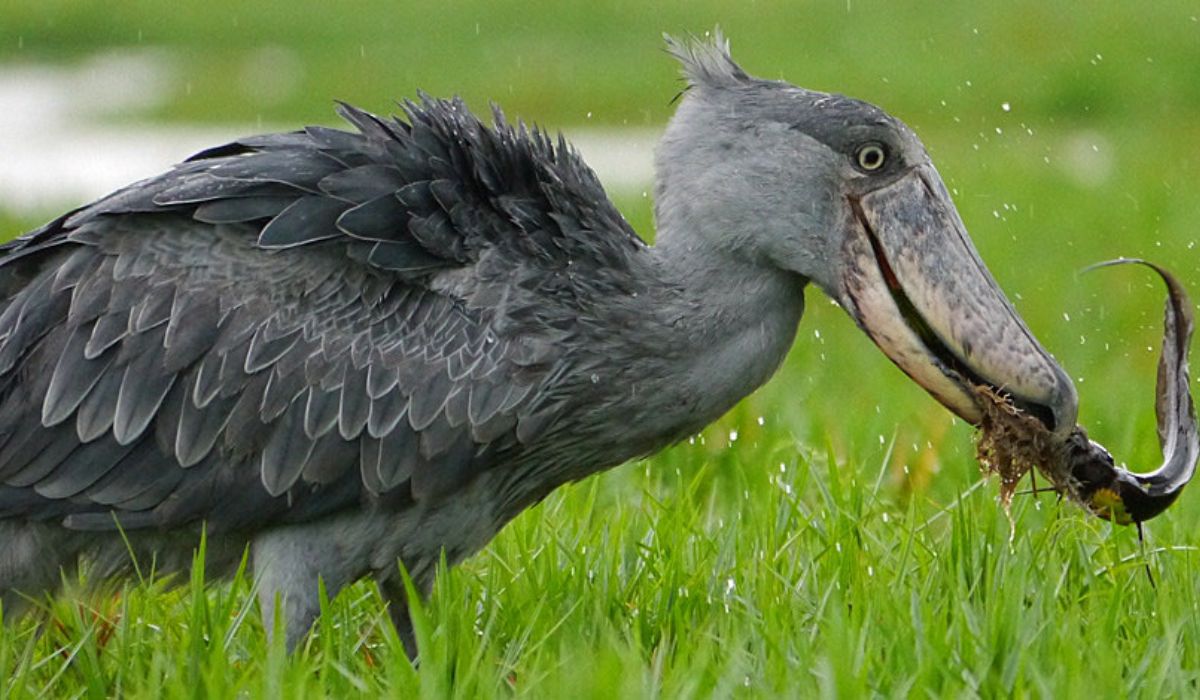
The shoebill stork bird is a skilled hunter that primarily feeds on fish, frogs, water snakes, and even baby crocodiles. It uses its massive bill to catch and crush its prey before swallowing it whole.
Other Countries Where the Shoebill Stork Has Been Recorded
Apart from Uganda, the shoebill stork bird has been recorded in South Sudan, Democratic Republic of Congo, Tanzania, Zambia, and Rwanda. However, Uganda remains one of the best destinations to see the shoebill stork bird due to its well-preserved wetlands and protected conservation areas.
Our Itineraries Featuring the Shoebill Stork Bird in Uganda
At Mond Safaris, we offer incredible itineraries that include opportunities to see the shoebill stork bird in Uganda:
16 Days – Visiting Uganda’s Top Wildlife Destinations: This safari takes you to Uganda’s best national parks, including Mabamba Swamp and Murchison Falls, where you have high chances of spotting the shoebill stork bird.
View Itinerary Details
Final Thoughts
Seeing the shoebill stork in Uganda is an unforgettable experience. Whether you visit Mabamba Swamp, the Nile Delta, or Ziwa Rhino Sanctuary, Uganda offers some of the best opportunities to witness this rare and magnificent bird in the wild. At Mond Safaris, we ensure that you have the best experience while searching for the shoebill stork bird in Uganda, along with other incredible wildlife encounters.

